Advertisements
Advertisements
प्रश्न
In the given figure, express a in terms of b.
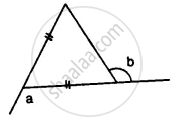
उत्तर
In Δ ABC,
BC = BA
∴ ∠BCA = ∠BAC
and Ext. ∠CBE = ∠BCA + ∠BAC
⇒ a = ∠BCA + ∠BCA
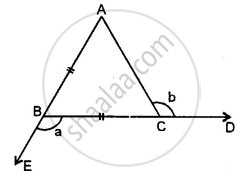
⇒ a = 2 ∠BCA .........(i)
But ∠ACB = 180° − b ..........(∵ ∠ACD and ∠ACB are linear pair)
⇒ ∠BCA = 180° − b .............(ii)
∴ a = 2 ∠BCA = 2 (180° − b)
= 360°− 2b
APPEARS IN
संबंधित प्रश्न
Is the following statement true and false :
All the angles of a triangle can be greater than 60°.
Fill in the blank to make the following statement true:
An exterior angle of a triangle is equal to the two ....... opposite angles.
In the given figure, if AB || CD, EF || BC, ∠BAC = 65° and ∠DHF = 35°, find ∠AGH.
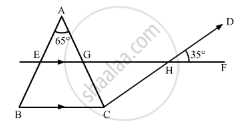
Find the value of the angle in the given figure:
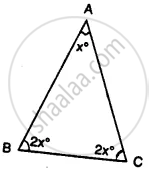
Can you draw a triangle with 25°, 65° and 80° as angles?
In a ∆ABC, AB = AC. The value of x is ________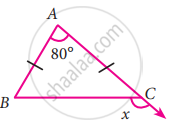
In ΔABC, name the 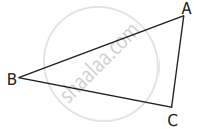
a) Three sides: _________, __________, __________
b) Three Angles: _________, __________, __________
c) Three Vertices: _________, __________, __________
In figure, points lying in the interior of the triangle PQR are ______, that in the exterior are ______ and that on the triangle itself are ______.
Can we have two acute angles whose sum is a reflex angle? Why or why not?
Which two triangles have ∠B in common?

